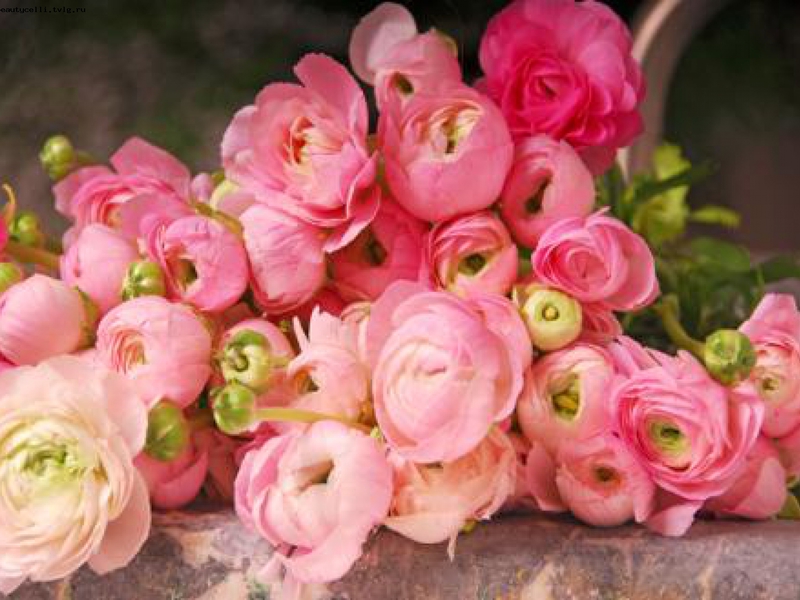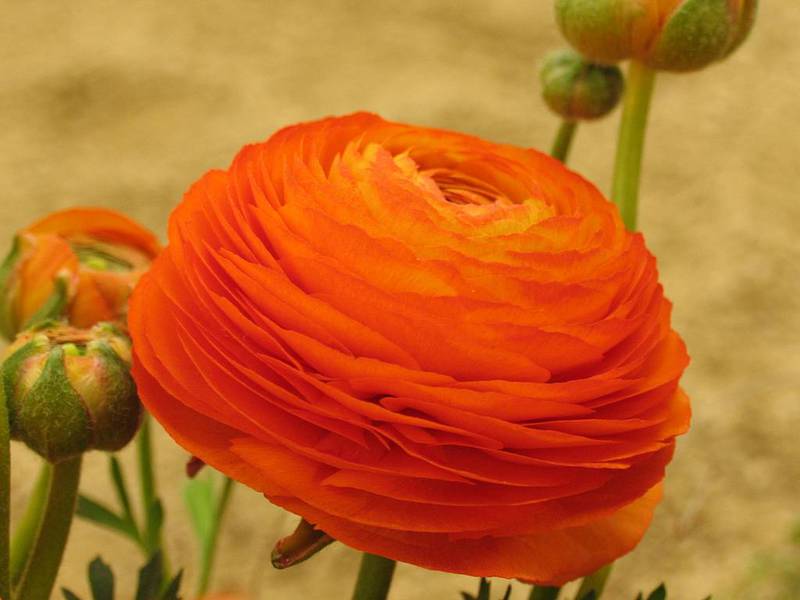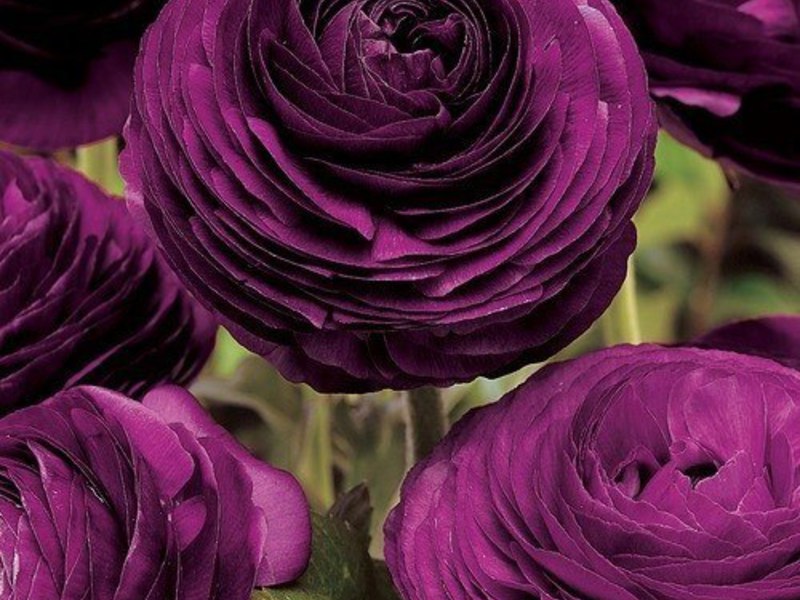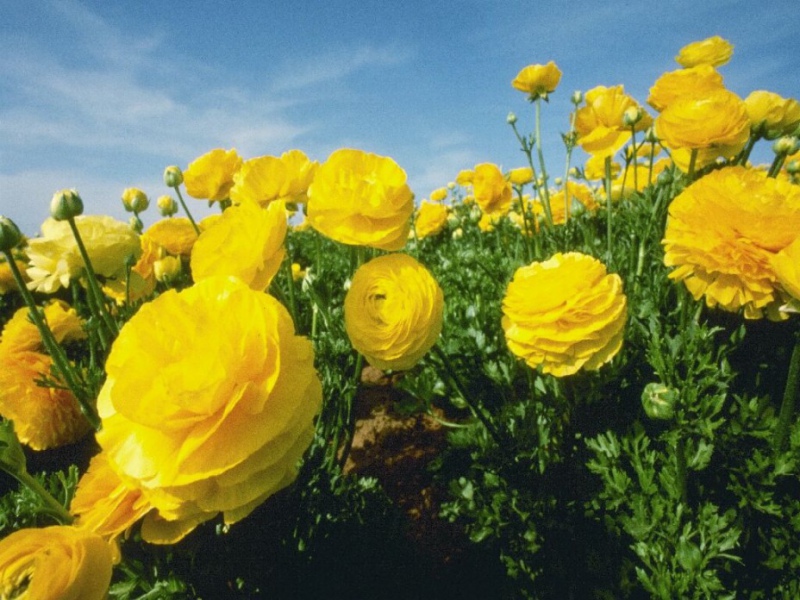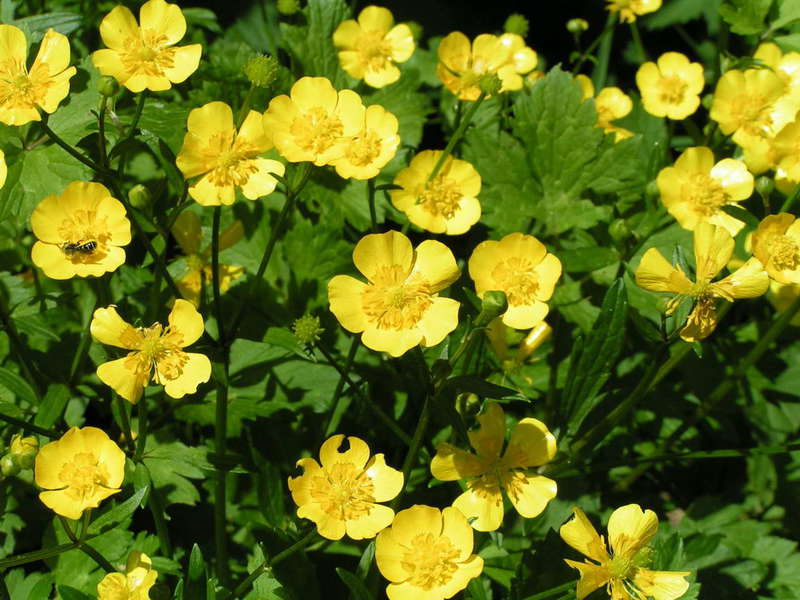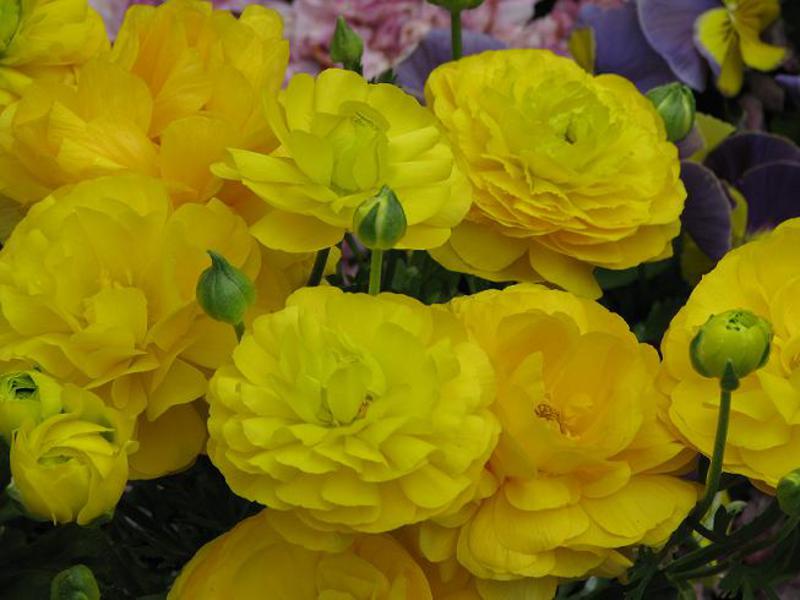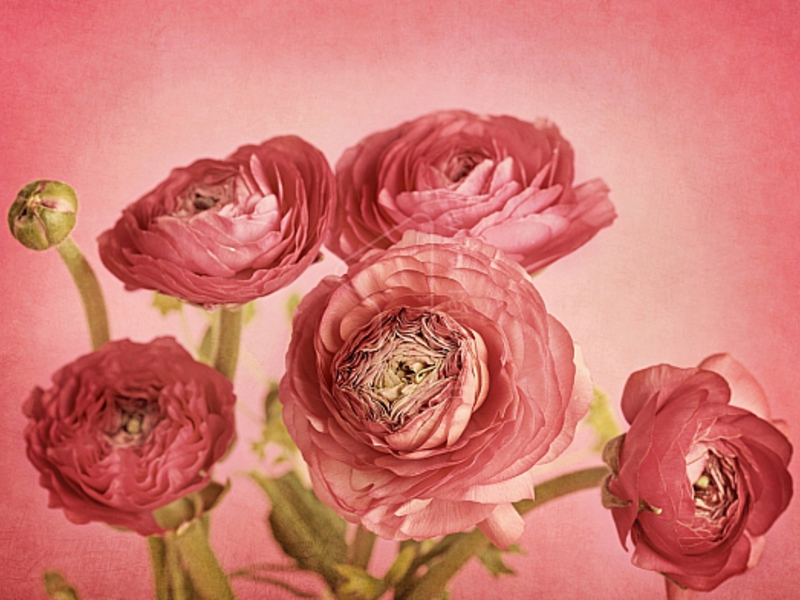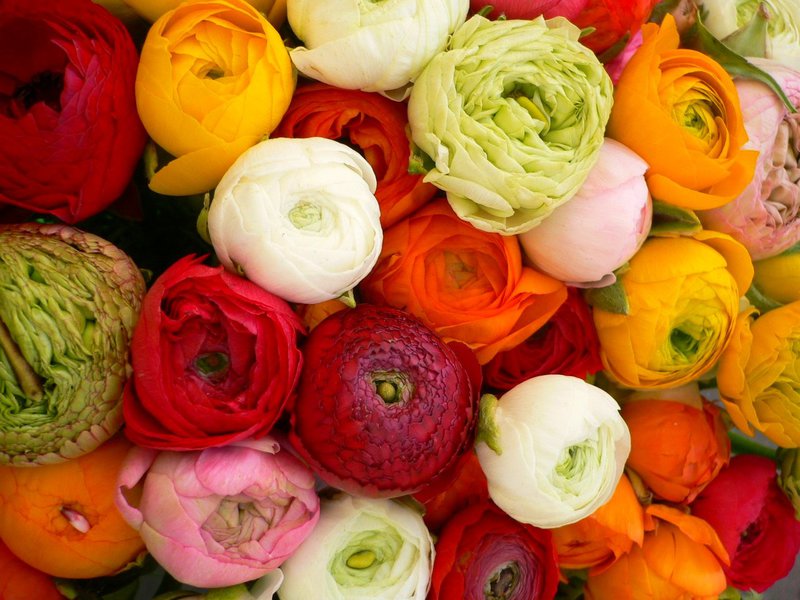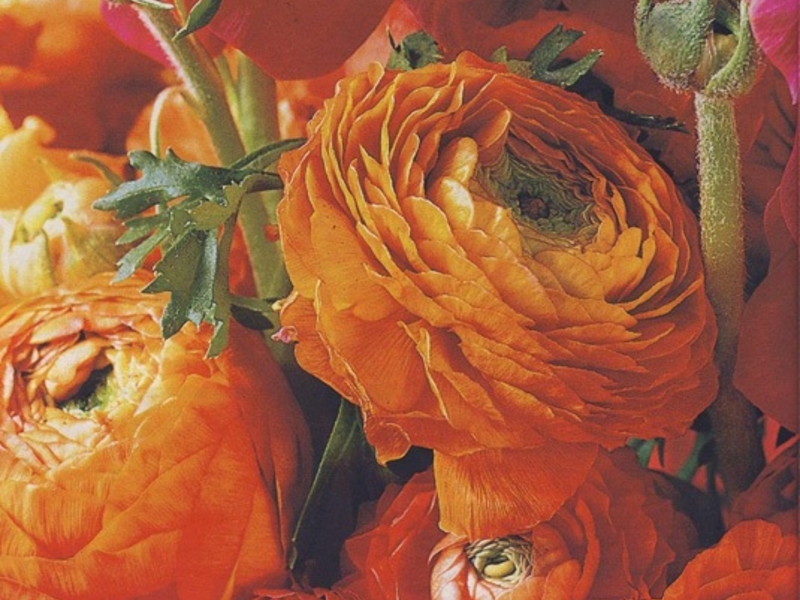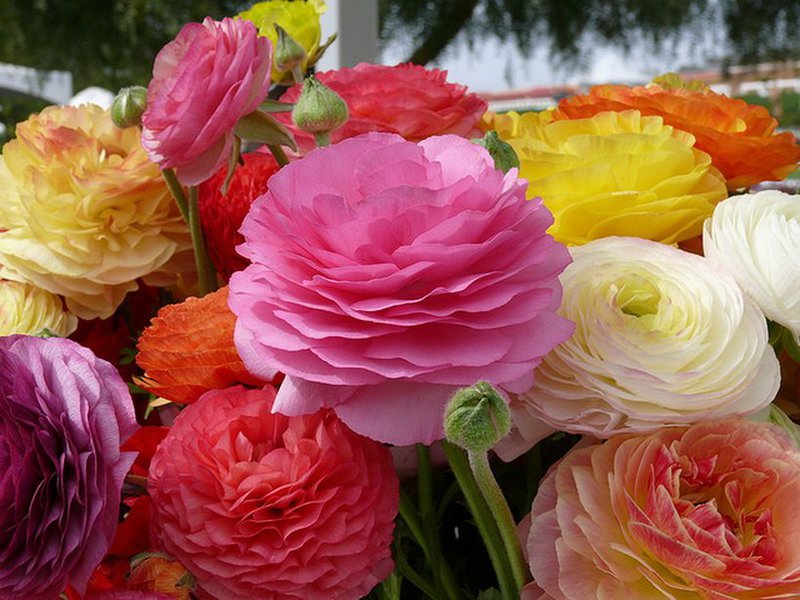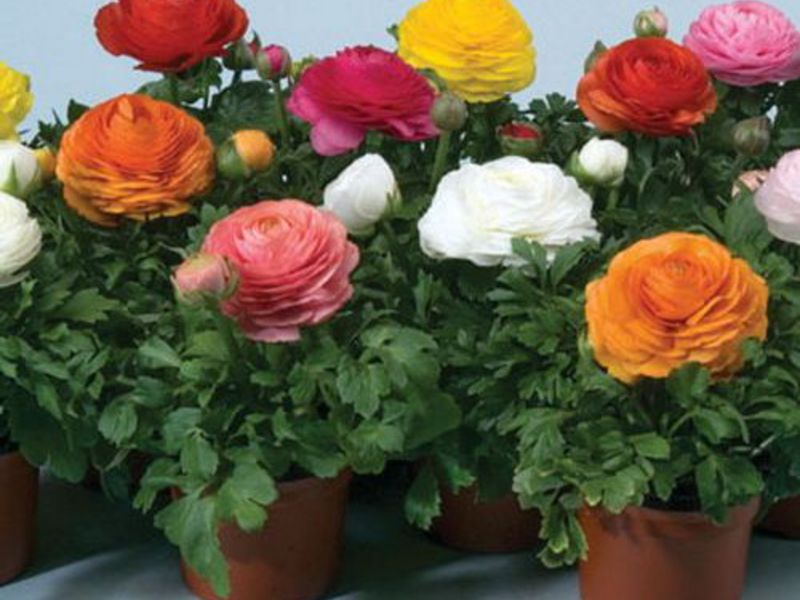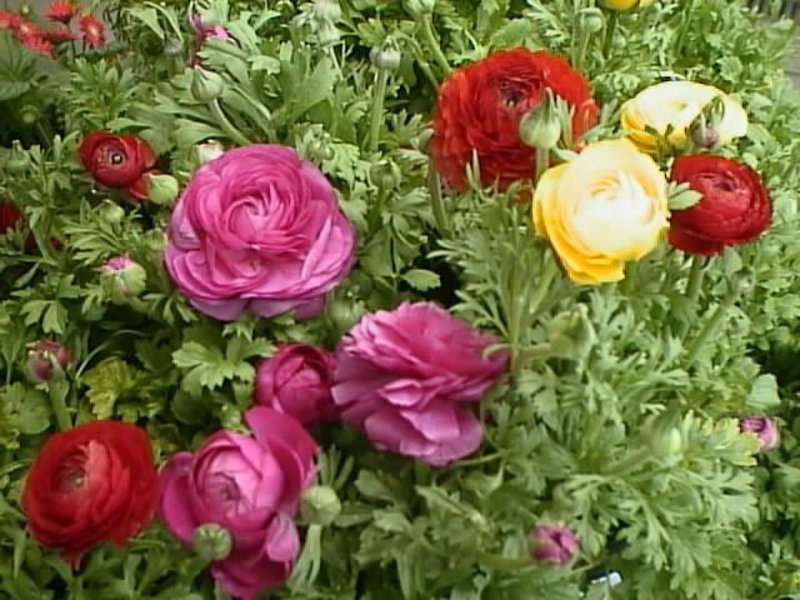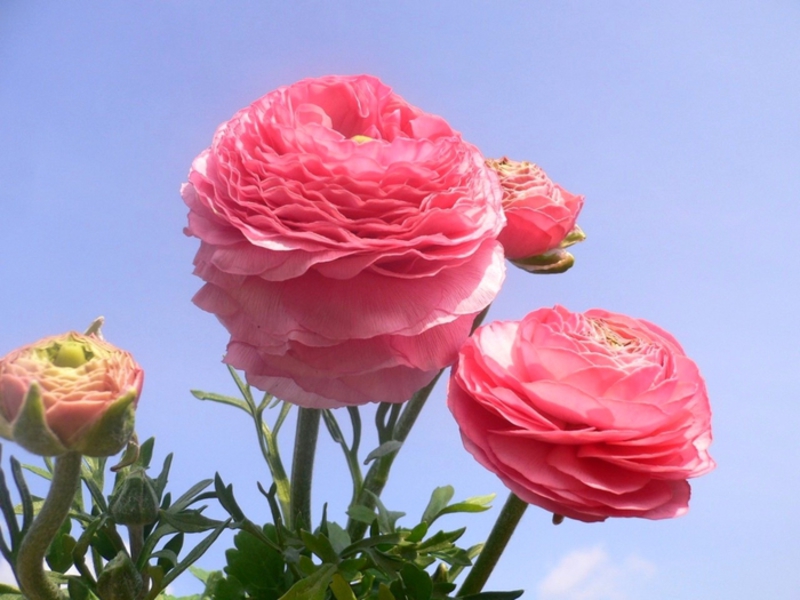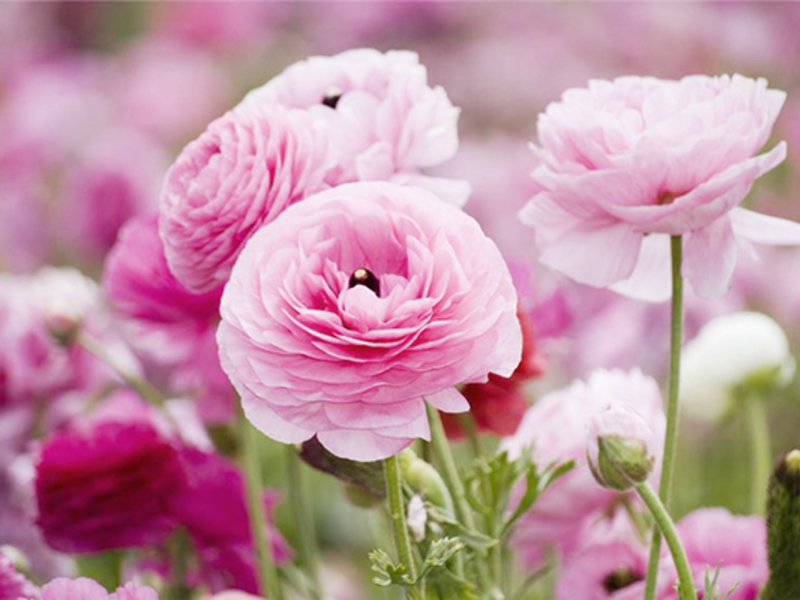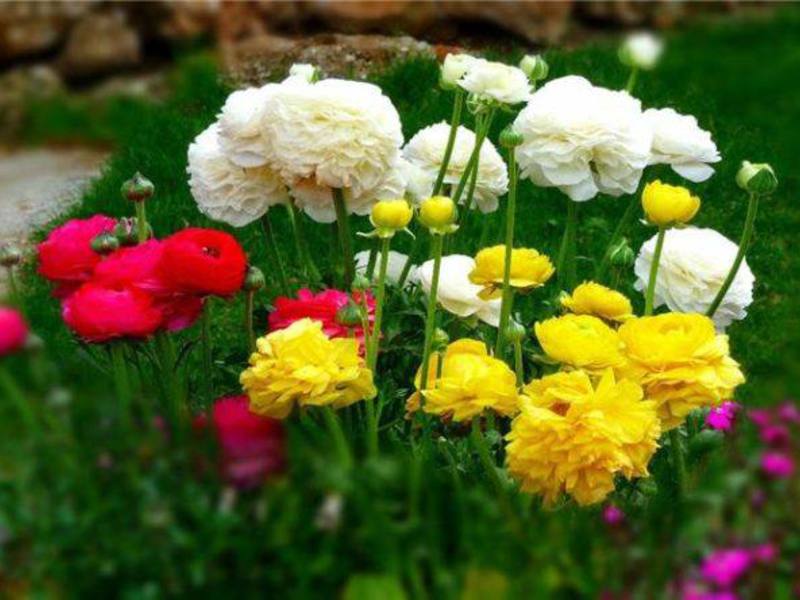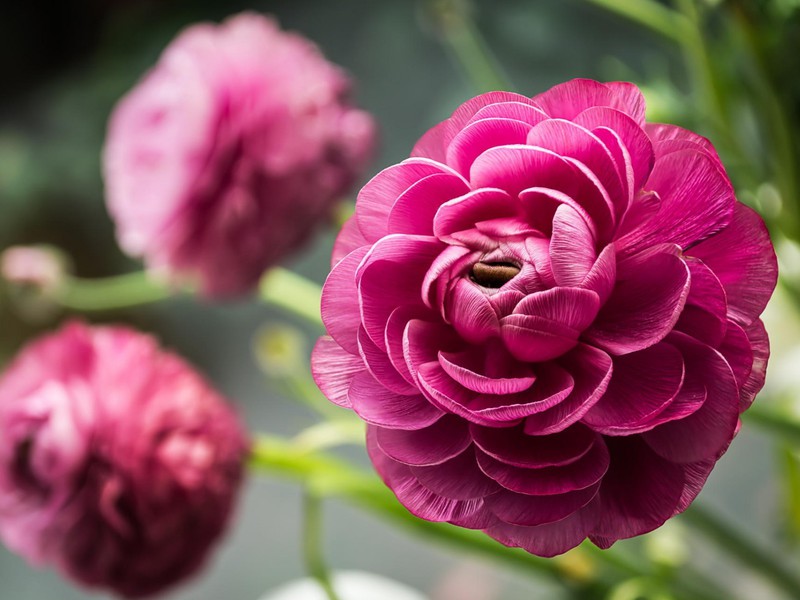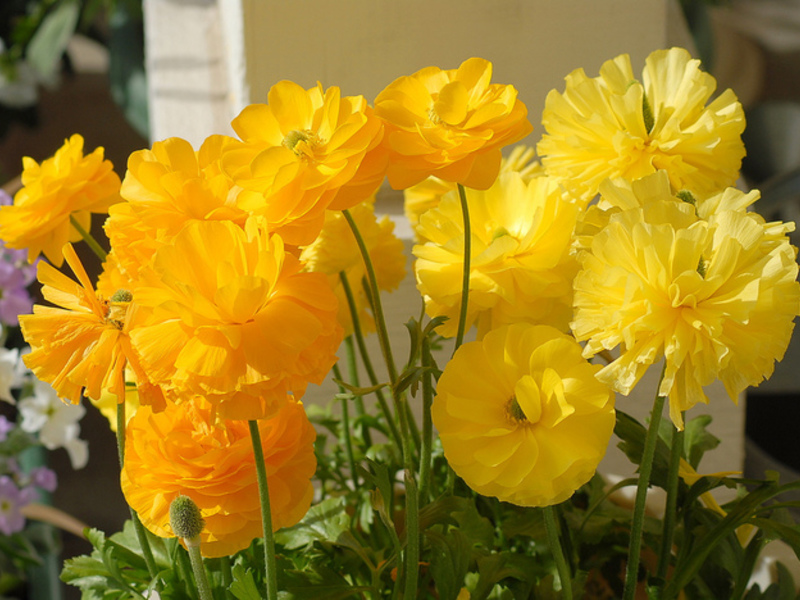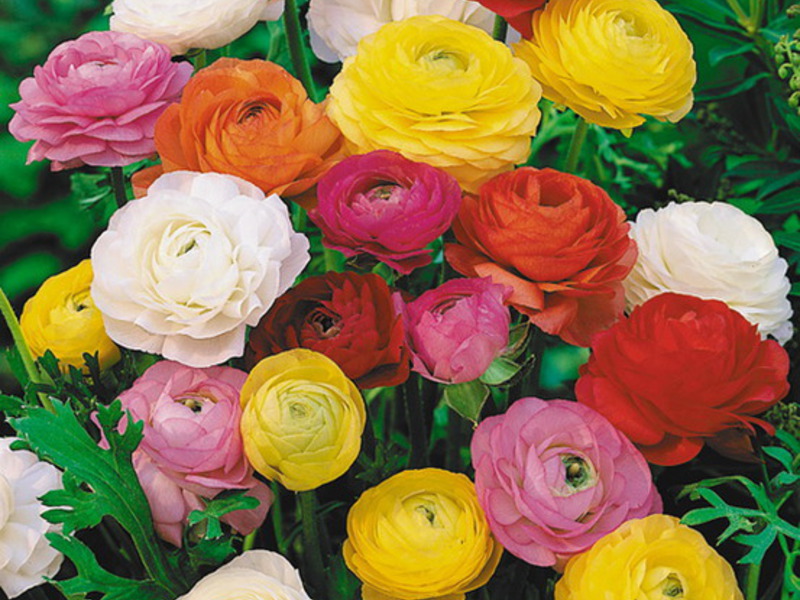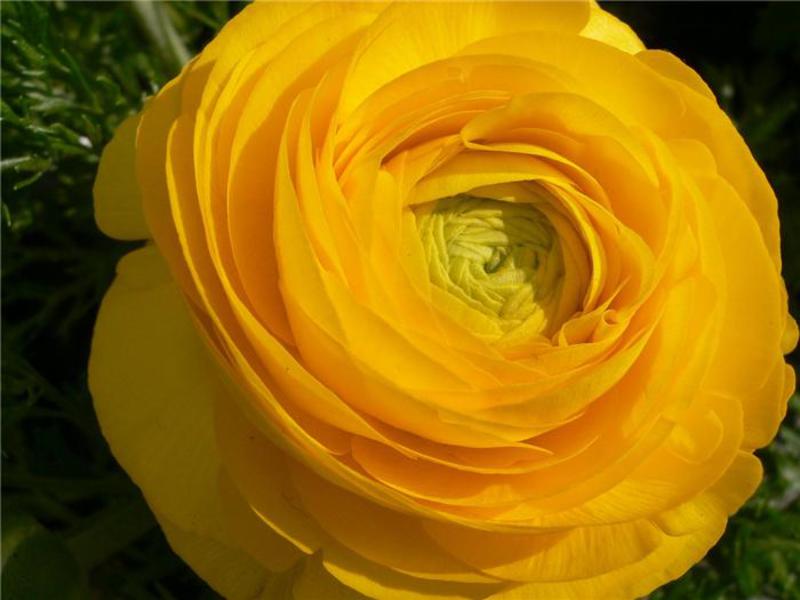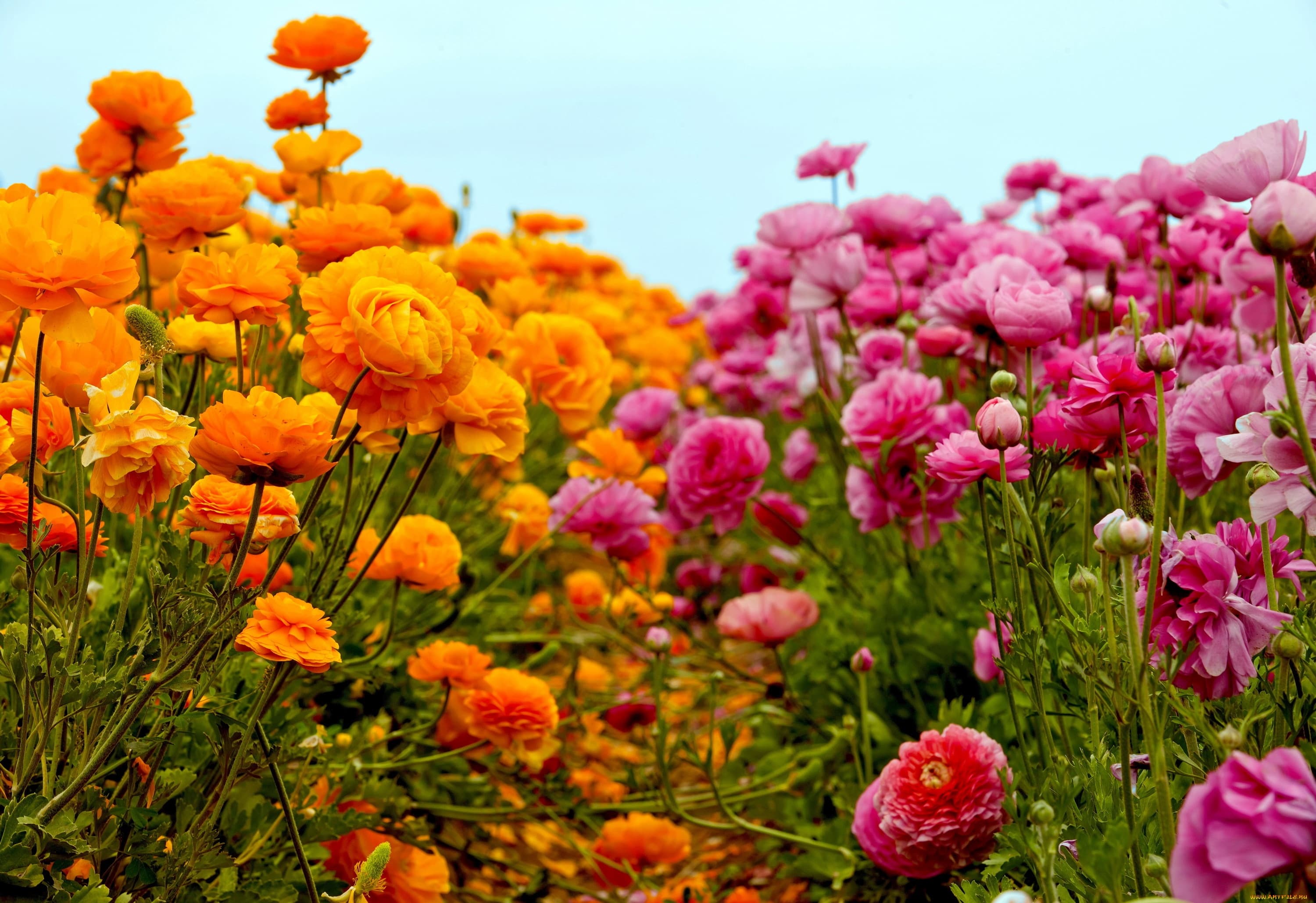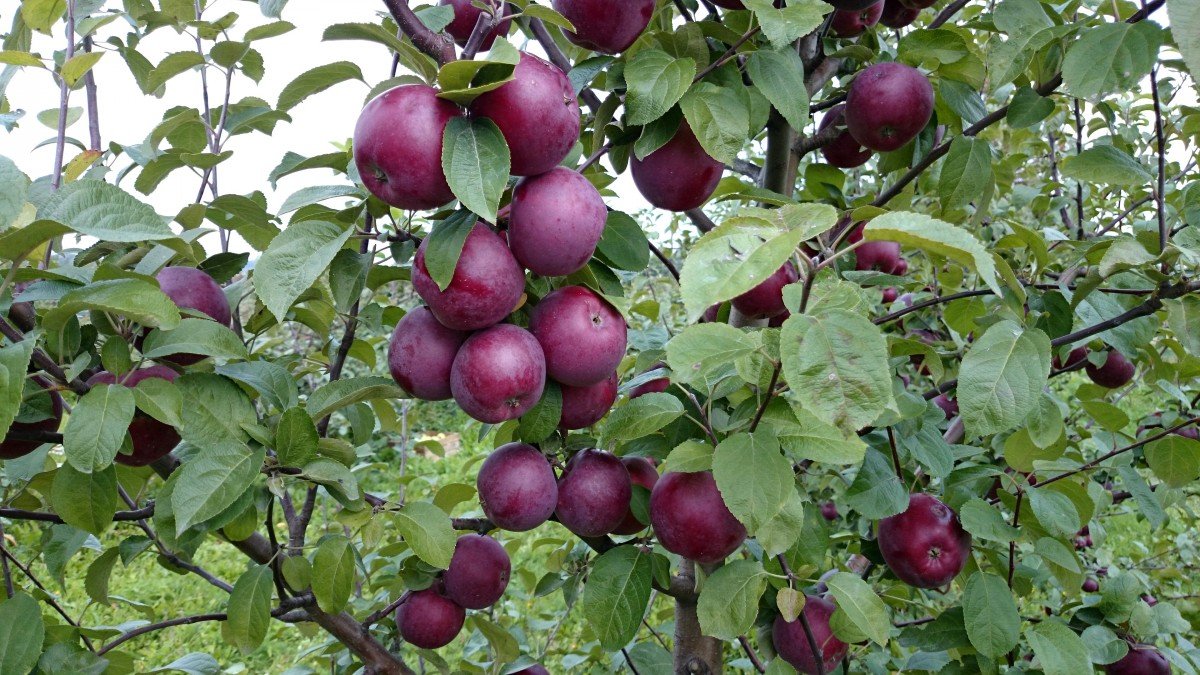To make the garden, and with it the surrounding area, more attractive, many owners use buttercups as a design element. They are known to many as ranunculus. The genus of this plant includes many species, the number of which exceeds 650. However, not all of them are suitable for decorating yards and gardens. This becomes clear if you look at the photo of buttercups. The most famous representative of this family, which is used for such a purpose, is the Asiatic or garden buttercup. The main distinguishing features of this plant are tall, lush foliage and large flowers.
Content
Buttercup species
In our country, the favorite habitats of these delicate flowers are fields and forests. Can highlight the main types of buttercups, which are most widespread:
- Caustic. Also known to many gardeners under the name "night blindness". This plant produces yellow inflorescences, the stem is medium-sized, has a height of 30-100 cm;
- Poisonous. This species does not have impressive decorative properties - its main advantage is the small size of the yellow flowers. The juice of a poisonous buttercup has useful properties, which is effective in the fight against scabies;
- Creeping. In the process of development, a creeping stem is formed, its main decoration is shiny yellow flowers. However, this beauty is deceiving, since the plant is highly poisonous;
- Multi-flowered. It is a medium-sized plant, in which a pubescent stem can grow up to 80 cm. Subsequently, several yellow buds are formed on it;
- Burning. It has small inflorescences, reaching a diameter of 12 mm. The stem of this buttercup is erect, which can reach a height of 50 cm.
Each of the above types of buttercups flowers is poisonous... Therefore, before planting them in the yard, you should think carefully, especially if you have small children.
How to plant?
The first step is to resolve the issue with the planting material of the garden buttercup. Usually, there is no problem with this, since today this plant can be purchased at any specialized store or via the Internet. Most often, gardeners are offered to buy buttercup rootsplaced in special packaging. However, before planting a buttercup, it is necessary to carry out certain preparatory measures.
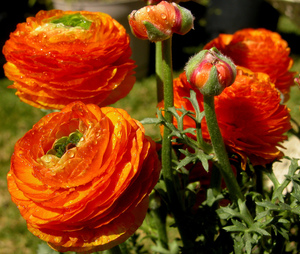 the roots must be kept in a dark solution of potassium permanganate for half an hour;
the roots must be kept in a dark solution of potassium permanganate for half an hour;- after that, they need to be allowed to "soak" a little. After all, usually when buying in a store, gardeners get planting material of suboptimal quality with signs of overdrying. To eliminate the consequences of improper storage, the roots are placed in a damp cloth and allowed to lie in this state for two hours at room temperature;
- then they must be sent directly into the fabric into a plastic bag, which, in turn, should be put in the refrigerator for a day.
If you carry out this procedure exactly, then later you will notice that the roots will increase in size, will become very similar to "spiders".This is the first sign that they are ready to land in the ground.
Where to plant?
If you want the garden buttercup to grow and develop well, then it is best to choose for it a place with little shading... At the same time, he will be able to feel good in a sunny area. But immediately you need to be prepared for the fact that under similar growing conditions this plant will bloom for a very short time, even with good care. It will be better if you plant a buttercup in a flower bed arranged under a tree with a spreading, but not very dense crown.
At the same time, you should not add other decorative crops to these flowers. Buttercup has rather bright petals, but it still has a rather miniature size, so it will be invisible against the background of garden annuals and perennials. Of all the plants that are a good neighbor for buttercups, only the blue anemone can be distinguished. However, when planting, you need to take into account some features: it is best to place it in the background, behind buttercups, or to allocate a place for it in the center of a round flower bed.
Buttercup grows well in almost any soil. However, it must contain a sufficient amount of nutrients. Therefore, you will create good conditions for its development if, when arranging a flower bed, you create drainage using gravel. Stagnation of water will have an extremely negative effect on the development of these flowers. Therefore, it is necessary to maintain a moderate soil moisture in the flower bed.
Landing dates
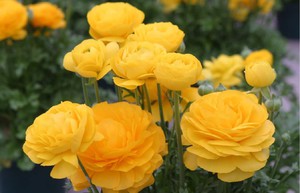 When growing a garden buttercup on your site, you need to take care of its protection from the cold. After all, this very thermophilic plant, therefore, taking into account this feature, and you need to plan its landing. If the soil has not yet warmed up enough, then you should not rush to plant the roots. It is recommended to plan the arrangement of flower beds in mid-May. If you live in a region where there is still a chance of frost at this time, then it is recommended to postpone the moment of transplanting into open ground, and until that moment it can be planted in peat pots and kept in a greenhouse or on a windowsill in an apartment. Roots can be transplanted into the flowerbed when the last wave of cold weather has passed.
When growing a garden buttercup on your site, you need to take care of its protection from the cold. After all, this very thermophilic plant, therefore, taking into account this feature, and you need to plan its landing. If the soil has not yet warmed up enough, then you should not rush to plant the roots. It is recommended to plan the arrangement of flower beds in mid-May. If you live in a region where there is still a chance of frost at this time, then it is recommended to postpone the moment of transplanting into open ground, and until that moment it can be planted in peat pots and kept in a greenhouse or on a windowsill in an apartment. Roots can be transplanted into the flowerbed when the last wave of cold weather has passed.
Landing features
For planting use swollen tubers, which must be buried in the ground by 5 cm. Particular attention should be paid to the location of the "spider legs" - they should be at the bottom. If the roots of the plant are planted in any other way, then there is a possibility that the gardener will not wait for the buttercups to germinate. Plants must be placed no closer than 10 cm from each other. Before planting, the soil must be watered. When all the prepared nodules are in the soil, additional watering of the flower beds is carried out.
In good weather, the emergence of flower shoots occurs within 1-1.5 weeks. However, to wait for the buttercups to bloom, you will have to endure another 2.5 months. At the end of August, the fruits ripen - multi-roots. One such fruit contains about 500 small seeds.
Buttercups care
Until the fall, the gardener needs to carry out the following mandatory activities - watering, loosening and feeding... Particular attention must be paid to maintaining optimum soil moisture. Watering should be moderate, so it should not be done too often. The last time buttercups are watered is in August - at this time they begin to wilt, as indicated by the yellowing of the leaves.
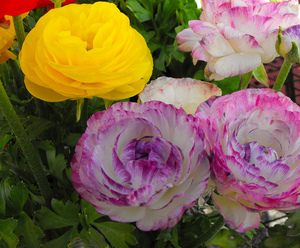 nitrogen fertilizers are applied to the soil as top dressing. An effective preparation is the top dressing "Kemira-Lux";
nitrogen fertilizers are applied to the soil as top dressing. An effective preparation is the top dressing "Kemira-Lux";- to obtain the best effect, fertilizer must be applied to the soil every two weeks, observing the recommended dose;
- if you initially chose an area with fat and nutritious soil for planting buttercups, then you will not need to feed. However, the benefits from them will be tangible, which will manifest itself in the form of abundant flowering and good development.
Reproduction
During the season, the roots of buttercups are formed a few young bumps kids... They can be used next spring to get new plants. However, first they must be collected: this should be done at the moment when the leaves begin to turn yellow. In this case, you need to dig out the roots of the buttercup and place them for a couple of days to dry in a warm, dry place. However, you need to store the young buds separately. So that they retain their germination, they are placed in peat. Particular attention should be paid to the fact that during storage in winter the humidity of the room is not too high, otherwise the roots will rot. In order for them to survive the winter without consequences, it is necessary to maintain the temperature in the room within 10-12 degrees.
Seed propagation
One of the breeding methods for buttercups available to any gardener is sowing seeds. However, obtaining them will not be easy. Many gardeners do not favor this propagation method due to the extremely low germination of seeds. However, if a flower lover has such a desire, then you can use this technique.
Sowing seeds is carried out in boxes already late February-early March... To do this, they are placed on the surface of the soil in the form of grooves, and an additional layer of soil up to 2 cm thick is poured on top. It is necessary to ensure that in the first days the temperature in the room is at the level of 10-15 degrees.
If the air humidity is high enough, there is a risk that the seedlings will not appear. After sowing, the boxes must be covered with foil. Two to three weeks after sowing, the box with plantings should be placed in a warm place. For the normal development of seedlings, it is necessary to maintain the temperature at 20 degrees.
Growing in a pot
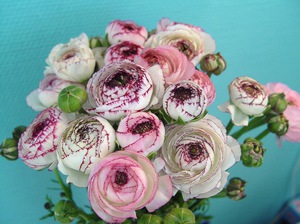 Due to the fact that the buttercup is a rather stunted plant, it is excellent for growing it indoors. To plant a plant, you need a small pot. You should focus on the diameter, which should be 15 cm.
Due to the fact that the buttercup is a rather stunted plant, it is excellent for growing it indoors. To plant a plant, you need a small pot. You should focus on the diameter, which should be 15 cm.
Before sowing, the container must be filled nutritious garden soil... As it, you can use a light mixture, for the preparation of which they take leaf humus and sand. However, first, drainage is laid on the bottom, using pebbles or expanded clay. There should be one plant per pot. A month after the emergence of seedlings, they begin to fertilize with fertilizers for deciduous indoor plants. When buttercups begin to form buds, fertilizers are applied to the soil to flowering indoor plants.
Conclusion
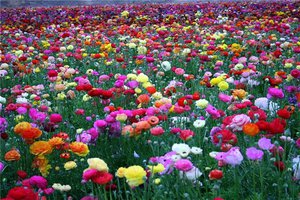 Although many gardeners have heard enough about buttercups, most of them most likely have not encountered them live. Therefore, in many areas, they are very rare. However, it is quite simple to grow this beauty on your site. The main thing is to take into account the basic points regarding the cultivation and care of these plants. Best of all they develop in a sunny place... Moreover, it will be better if there are no other decorative crops next to them.
Although many gardeners have heard enough about buttercups, most of them most likely have not encountered them live. Therefore, in many areas, they are very rare. However, it is quite simple to grow this beauty on your site. The main thing is to take into account the basic points regarding the cultivation and care of these plants. Best of all they develop in a sunny place... Moreover, it will be better if there are no other decorative crops next to them.
Proper care of buttercups involves not only regular watering, but also fertilization. However, if the site chosen for planting flowers is initially rich in nutrients, then these flowers can provide abundant flowering without additional measures.
